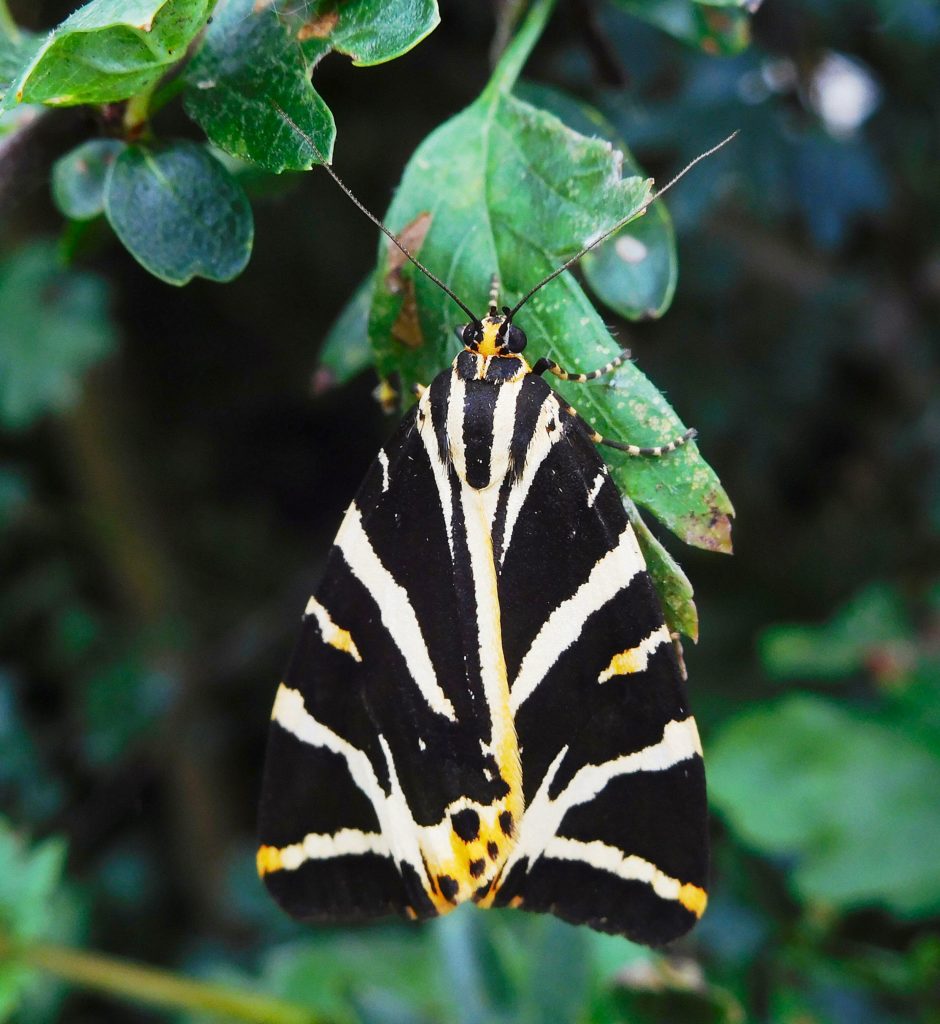
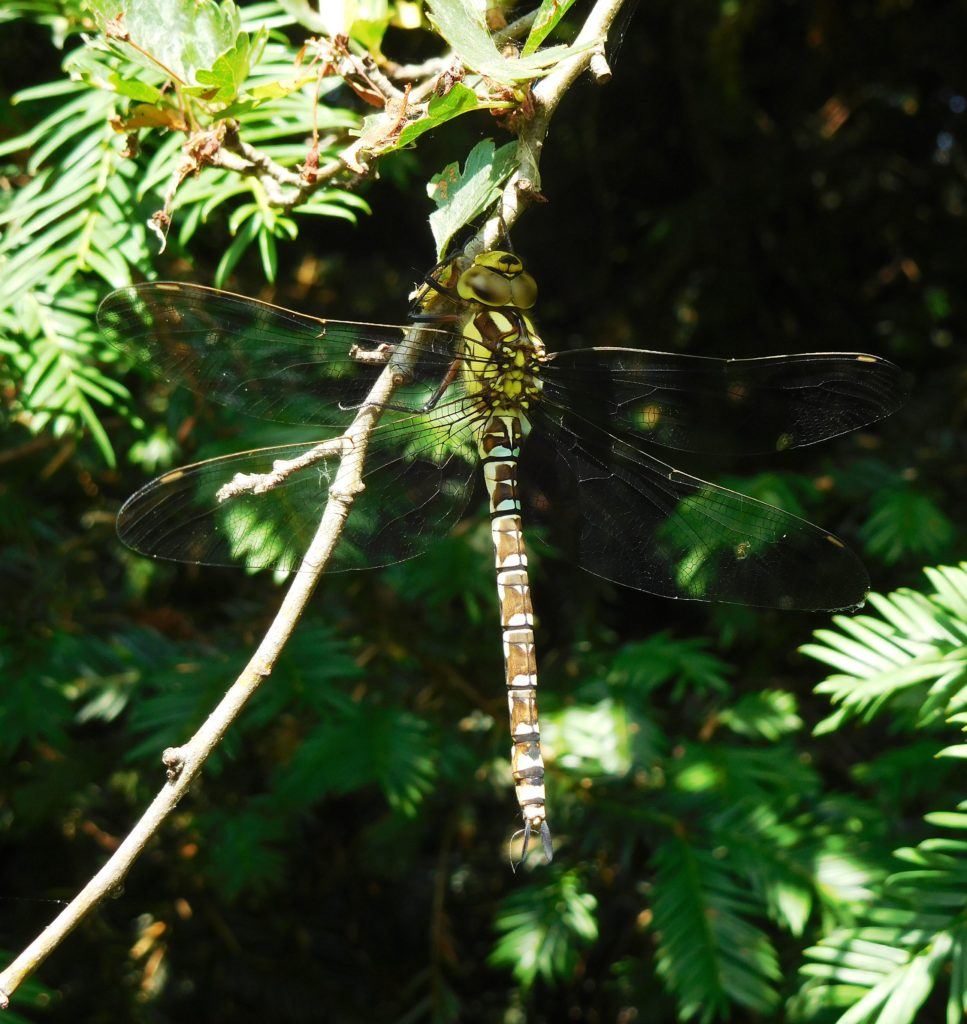

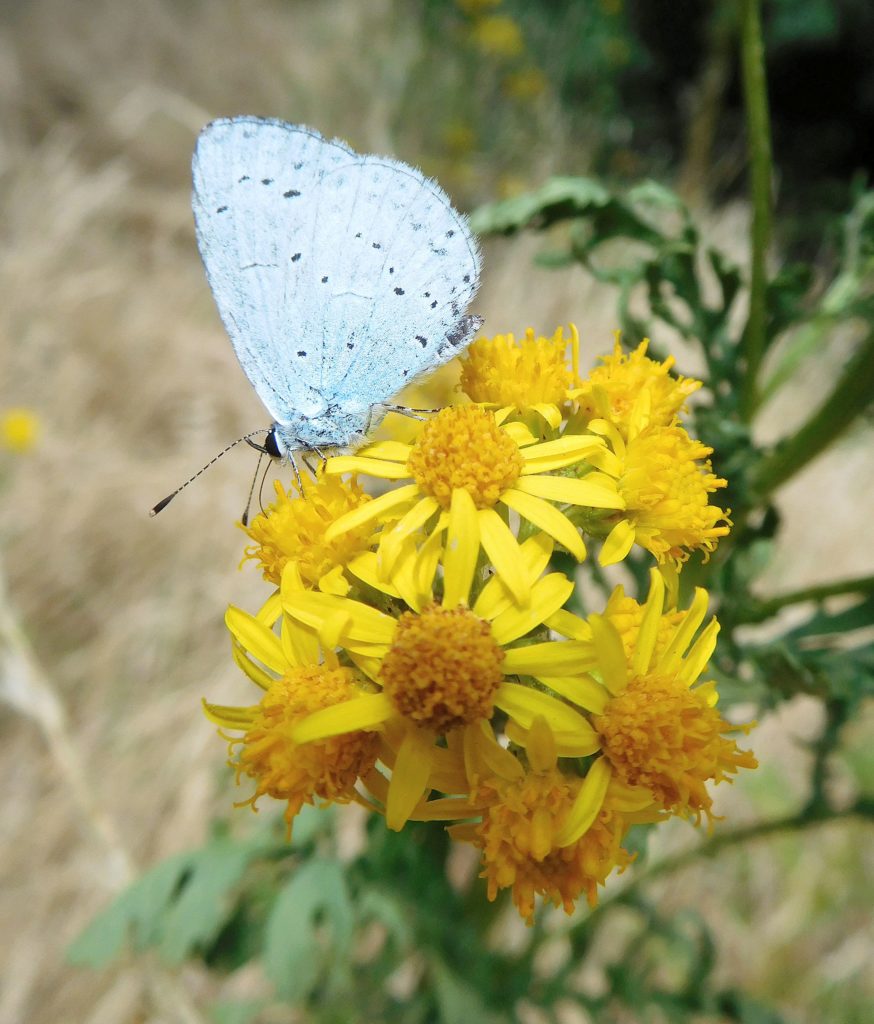




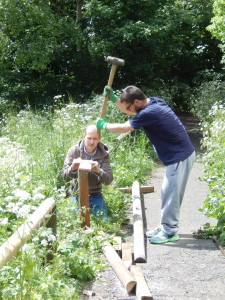
On a lovely May day, we replaced quite a bit of wooden railing, the rail mainly being fine but several of the posts having rotted at the base.
As we worked, a pair of Brimstone butterflies flew nearby, as well as a few Orange Tips, a Red Admiral, a couple of Holly Blues, and a Large White. It was very pretty among the cow parsley, green alkanet and garlic mustard, with visiting bees and hoverflies. A couple of brilliant metallic green Rose Chafer beetles flew over, just above the tops of the cow parsley.
Around the reserve, newly-fledged robins and jays were hopping about unsteadily. A blackcap sang sweetly; a blackbird, a wren and some robins chattered in alarm from a thicket, mobbing a predator, apparently a magpie — most probably as it threatened to rob a nest of eggs or young.

Above the pond, Azure Damselflies and Large Red Damselflies were in cop and egg-laying (both species); up to three male Small Reds at a time were dashing about in tiny dogfights.
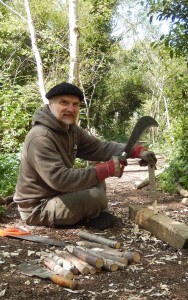
Well, I’d read John Stewart Collis’ marvellous The Worm Forgives the Plough, and his description of the bill-hook as a marvellous tool, but it’s one thing to read about something and quite another to do it with a purpose.
Today, we were tasked with making edges for a stretch of path in the reserve. You can see some lengths of birch trunk lying along the path edge below my left hand. These of course had to be pegged to keep them in place, and then wired and stapled to discourage casual vandalism. The only source of wooden pegs was … more sticks. I set to work with the bill-hook, and indeed the tool is finely adapted to its job. Well-balanced, just heavy enough, and sharp, it slices through wood with a satisfying soft chopping sound. Even so, care and skill are needed, and the job takes a bit of time.
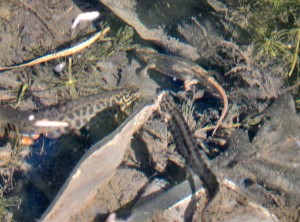
When I had made all the pegs anyone needed, I went for a little nature walk. Down by the pond a now-scarce visitor was singing in the birch trees: a Greenfinch. In the pond, several smooth newts were flicking and darting about. The sun was glinting off the water, as you can see, but it seems two magnificently spotty males were courting a drabber female at the top.
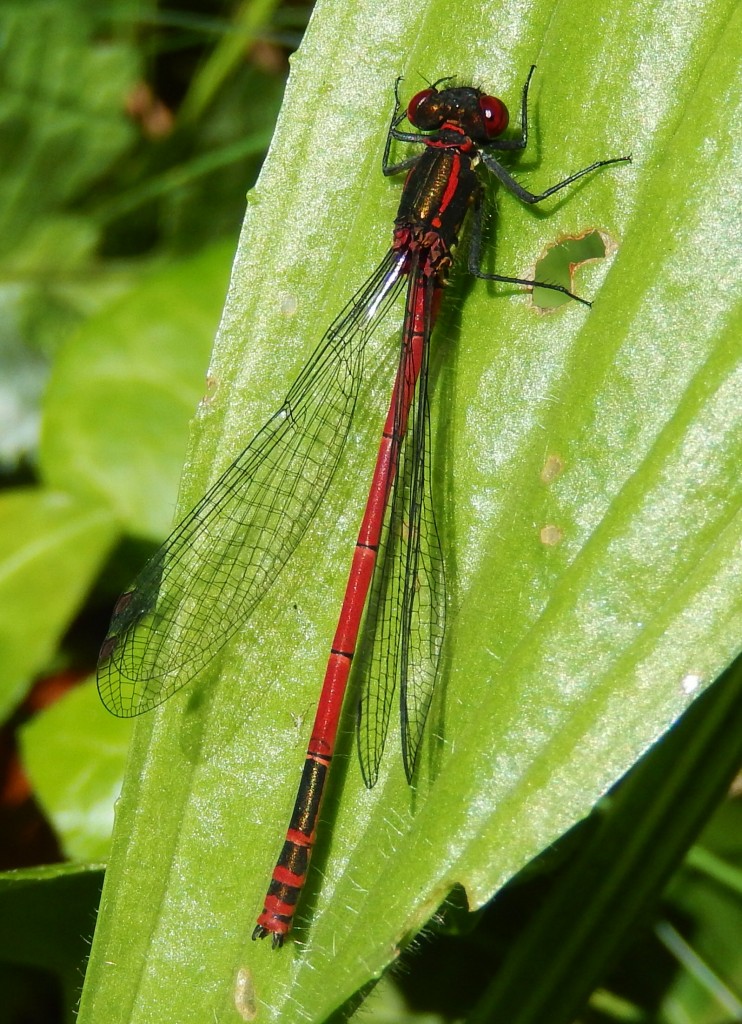
After all the rainy weather (I even found a large toadstool – in June: The Blusher, Amanita rubescens), today was suddenly hot, at least it seemed so while digging brambles out of the ramp meadow, raking up the scythed Cow Parsley in the full sun, pitchforking it into a barrow and carting it off to a deadhedge. It was a satisfying conservation job, one of those where you can see what you have done, and it looks a lot better after than before. The area is supposed to be a meadow; we successfully suppressed the overgrowth of brambles two years ago, leading to a burst of rather nice Garlic Mustard and its attendant Orange Tip butterflies last year: and a second wave of Cow Parsley that must have seeded itself really well, because it suddenly covered the area this year. Now that it’s all cut, we may hope that grasses and smaller herbs may get going: some Ground Elder at least has begun the process.
In the pond and on the vegetation for a way around it, including atop the hump, Large Red Damselflies are soaking up the sunshine, and flying in cop, egglaying – the females dip the rear half of their very long abdomens in the water to reach an aquatic plant such as Myriophyllum on which they place the eggs.
The butterfly transect was again quiet, but graced by the first Cinnabar Moth of the year: there is a fair bit of Ragwort coming up, and this adult must be newly hatched out of a pupa, presumably at ground level or below as the plants are annual.
Sure enough, after I had finished the transect, the first Holly Blue butterfly of the year, beautifully fresh and new, skipped its bright quick flight just in front of the hut.
Birding on a Bike without Binos, how is that possible? My mind fogged by editing, I took an hour off and cycled down to the river to get some air, space, sunshine and nature. It was a lovely bright spring day. A holly blue butterfly flew about the garden, and a buff-tailed queen bumblebee crawled about the grass looking for a hole to nest in – she was certainly a queen as she was very large, and she’s the only form of her species that is actually buff tailed, the rest are white tailed.
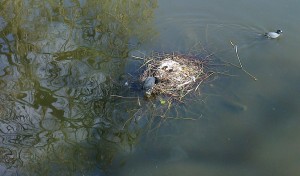
In Chiswick Park, a pair of mallard had at least six ducklings: the adults sat on the bank, with probably one more duckling (no binoculars today) while the six adventurous ones paddled nimbly about in circles not too far away. In the midst of William Kent’s carefully landscaped ‘river’ (a long narrow pond) was a coot’s floating nest; the sitting parent got up while I was watching, revealing three cootlings and one unhatched egg in the nest. A blackcap sang sweetly from the trees.
Down by the river, a solitary great crested grebe swam against the tide, glinting white in the sun. Goldcrests squeaked from the cypresses by the boathouse; allotment owners worked their patches of ground. A small tortoiseshell butterfly flew swiftly past the barbecues which were grilling kebabs. It did feel like spring.